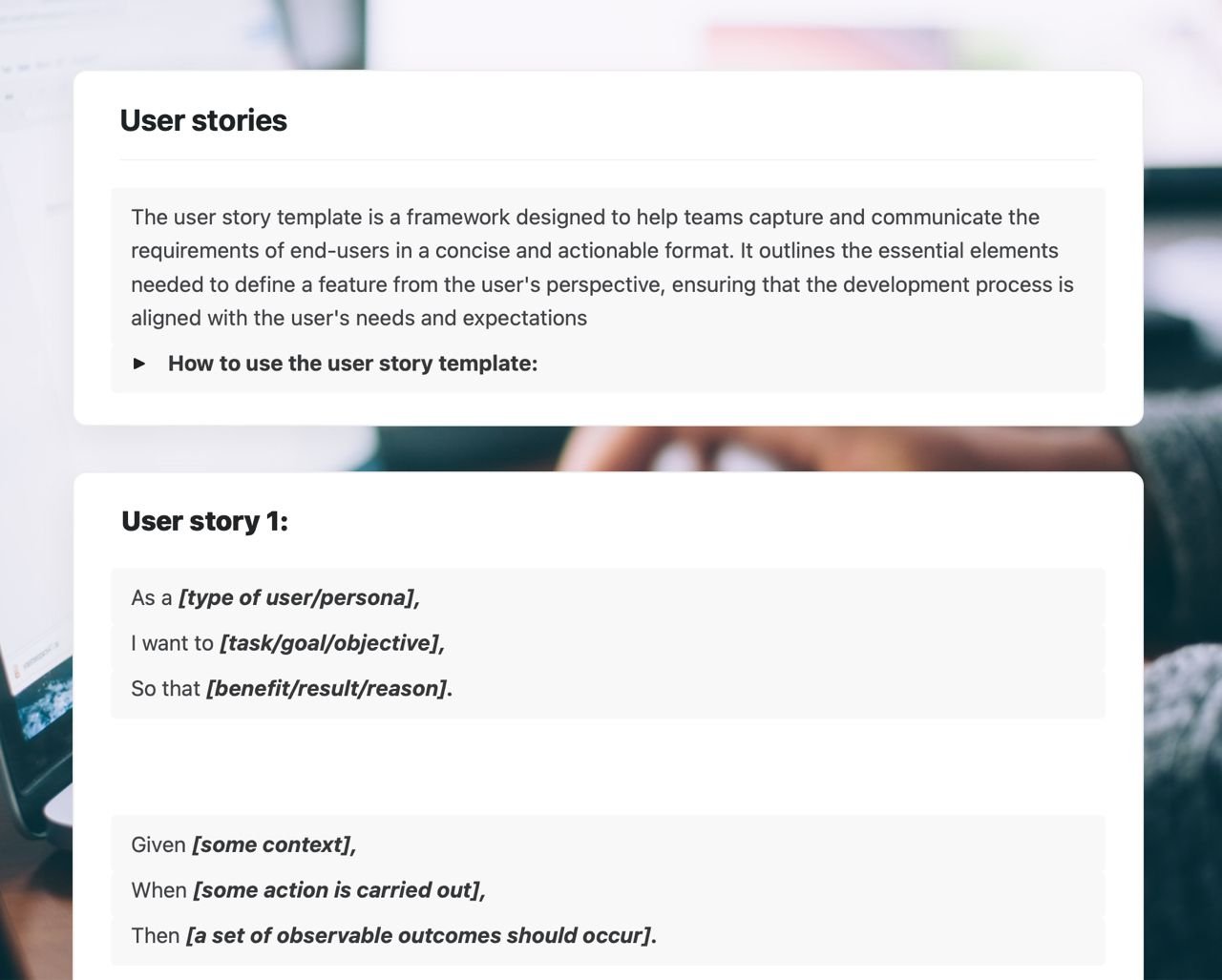User stories
Discover how our user stories template can streamline your development process, enhancing communication and user satisfaction effectively.

Harnessing user insights: the essence of user stories templates
User stories bridge the gap between technical requirements and the valuable insights of actual product usage by real users. The template provided is a fundamental resource for teams looking to streamline the development of features with the user's perspective as the focal point. It is a strategic blueprint, essential for those aiming to enhance their product based on user-centric feedback, facilitating a direct path from user needs to finished product features. By adopting this user story approach, teams can foster a culture of empathy, ensuring that every product iteration is a step towards more meaningful user engagement.
What are user stories?
User stories are succinct, simple expressions of requirements composed from the perspective of an end user. They serve as a conversational placeholder for a future conversation and a commitment to understanding and fulfilling the user's needs. A well-constructed user story includes who the user is, what they need, and why they need it, laying a foundation for collaboration and innovation. For a practical tool to structure these ideas, the story planning template from Craft could be a valuable resource in transforming user story concepts into well-organized narratives.
The importance of user stories:
Incorporating user stories into product development is crucial because they prioritize the user experience above all else. They offer a laser-focused clarity on the user's needs, breaking down complex product roadmaps into actionable tasks that deliver value. This approach is especially vital for product managers, UX/UI designers, and development teams who are tasked with delivering not just a product, but an experience that delights the user. Gain more insights into crafting compelling narratives by reading about narrative writing on Craft, which can enhance your skills in creating engaging user stories.
Key components of the template:
The template ensures that the feature development is well-aligned with user needs and expectations, covering all critical aspects:
- Identify the user: This ensures the feature is created with a specific persona in mind, which makes the story relatable and focused. Identifying the user also helps in tailoring the feature to address the unique preferences and challenges of the target audience.
- Define the need: By articulating the task or goal, the team can pinpoint exactly what the user wants to achieve. This clarity drives the development process, ensuring that every effort is aligned with meeting the user's specific requirements.
- Explain the benefit: Outlining the benefit helps in understanding the value proposition of the feature for the user. This step is crucial in justifying the feature's existence and ensuring it adds real value to the user's experience.
- Set acceptance criteria: Defining conditions for completion provides a clear end goal for the development team, ensuring that the feature fulfills its intended purpose. This also aids in quality assurance, making sure the feature not only meets technical specifications but also delivers on user expectations.
To further refine your approach to user stories and team collaboration, explore Craft's backlog refinement meeting templates, which can provide valuable insights into organizing successful backlog refinement meetings.
Benefits of using the user stories template:
Utilizing the user story template is a strategic approach that transforms the way teams develop products, aligning every step of the process with the user's needs and expectations. Here are some of the key benefits:
- Enhanced communication: It simplifies complex requirements, fostering better communication between stakeholders and the development team. This leads to a more cohesive understanding and alignment on project goals and deliverables.
- Efficiency in development: By clearly defining user needs, the team can work more efficiently, reducing the time spent on revisions. This streamlined approach results in faster delivery times and more agile responses to changing user requirements.
- Increased user satisfaction: Features developed through user stories are more likely to meet actual user needs, thereby increasing satisfaction and loyalty. This user-centric approach can significantly improve the overall user experience and brand perception.
- Better prioritization: The priority setting in the template ensures that the most critical user needs are addressed first. This helps in effectively allocating resources and efforts where they can have the greatest impact.
- Measurable outcomes: Acceptance criteria provide a clear measure for when a feature is ready to be deployed. This objective benchmarking ensures that the final product not only meets technical standards but also delivers the intended user benefits.
Additionally, learn how daily notes in remote work can augment your team's user story development process, as shared in insights from Craft’s VP of marketing
Encouraging Trial of the Template
Whether you're a startup looking to disrupt the market or an established enterprise aiming to stay ahead of the curve, this template is a crucial tool in your arsenal. Take the next step towards building a product that resonates deeply with your users. Employ the user story template to infuse your product development cycle with clarity, focus, and user-centric precision. Your users have stories worth telling—capture them with precision and turn insights into action.
More Templates


